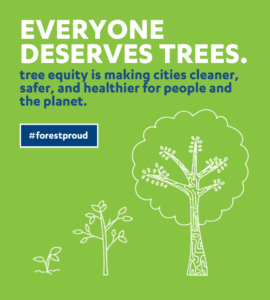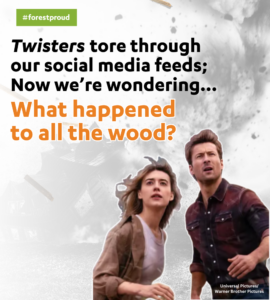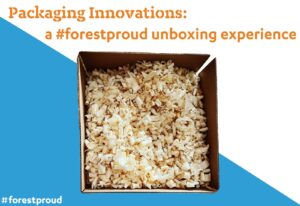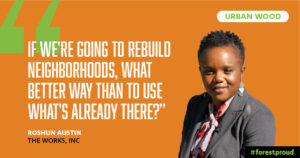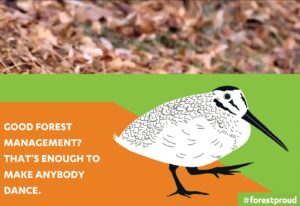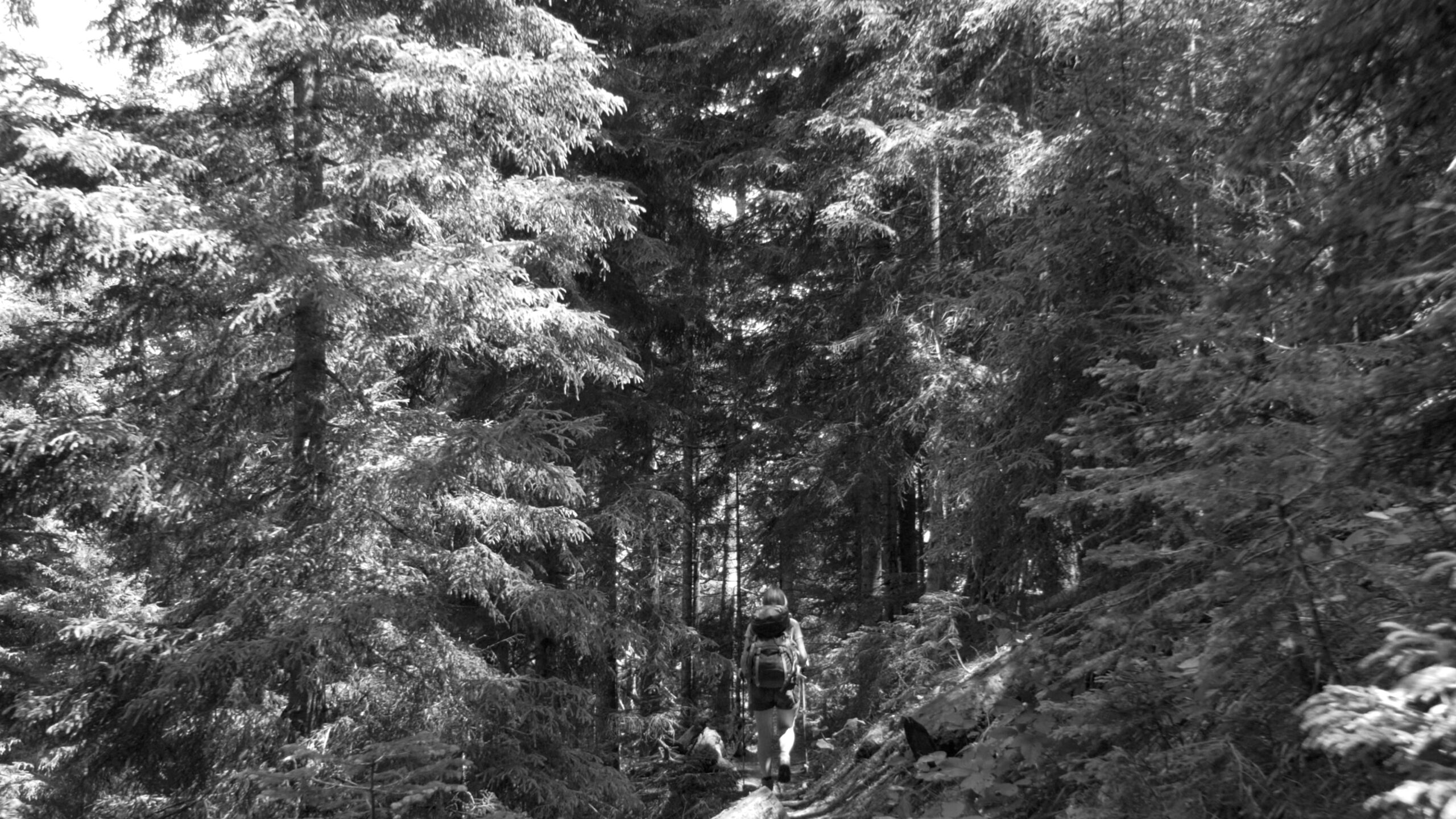
People
Forests are powered by people.
From Tribal land managers and private landowners to apprentices, students, and urban stewards, people are the heart of forest stewardship. At #forestproud, we elevate the stories of those shaping the future of forests through innovation, knowledge, and community. By building connections and sharing lived experiences, we inspire action that sustains forest workforces and fosters understanding across generations and geographies.
Climate Solutions
Tree Equity: We all deserve trees!
Trees are great for people and planet! But, city and neighborhood trees are highly concentrated in affluent, white neighborhoods and sparse in communities of color and low income. We can specifically map and plan the next generations of urban forest plantings to make trees – and their benefits – more equitable.
ReadWood Innovation Following Natural Disasters
What happens to wood after natural disasters? Check out how the forest sector is positioned to help step up and help mitigate climate disasters.
Reada #forestproud unboxing experience
Wouldn’t it be great if we could replace unsustainable everyday packaging with renewable, recyclable, biodegradable, carbon-storing options that are good for the planet – and still functional for your daily needs?
ReadScaling Urban and Community Wood in Memphis
By scaling and piloting different models to connect urban and community wood with viable markets, the wider forestry sector can lead with purpose and commitment to advance climate action and social equity. In the words of Jeff Carroll, the CEO and co-founder of the Urban Wood Economy, Inc., “urban wood is an opportunity, not just a commodity.”
ReadWood Innovations
This Earth Day, we’re wading into the great Planet Vs. Plastic debate. And we’re #foresproud to throw in behind Planet, just like we do all the other days of the year.
ReadSustaining Biodiversity in the Face of Climate Change
We spend a lot of time talking about climate change + forests, so we’re naturally talking about biodiversity and wildlife too. How can we help make forests more climate-resilient habitats?
Read
